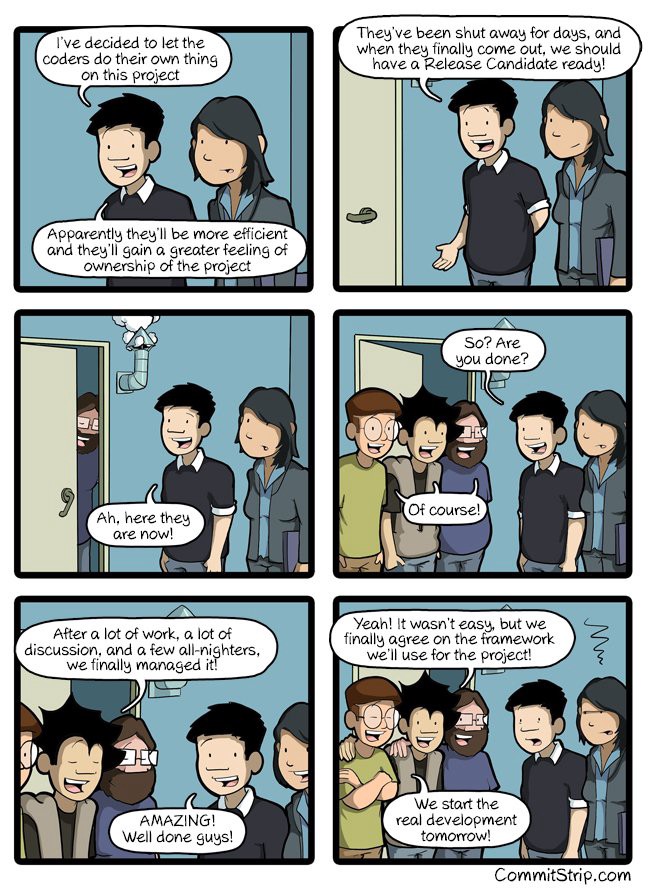Garbage Collection is the process of cleaning up a computer’s memory by getting rid of data that’s no longer needed by a program. There are several algorithms for doing this. (Black squares represent free memory.)
Here’s a “reference counter” garbage collector:

Here’s a “mark sweep” garbage collector:

Here’s a “copy” garbage collector:

And here’s what happens if you don’t bother with garbage collection until you’re done:

You can read all about these here (5 minute read)
Here are three links worth your time:
- Net Neutrality, Walled Gardens, and the future of the the Open Internet (24 minute read)
- What are the SOLID principles, and how do they make your code cleaner? (12 minute watch)
- 12 free things you can do to jump-start your UX Design career (9 minute read)
Thought of the day:
“Securing a computer system has traditionally been a battle of wits: the penetrator tries to find the holes, and the designer tries to close them.” — Gosser
Funny of the day:

Webcomic by CommitStrip.
Study group of the day:

Happy coding!
– Quincy Larson, teacher at freeCodeCamp

